
用300行Python代码实现一个人脸识别系统
最近又多了不少朋友关注,教用先在这里谢谢大家。行P现个系统关注我的码实朋友大多数都是大学生,而且我简单看了一下,人脸低年级的识别大学生居多,大多数都是教用为了完成课程设计,作为一个过来人,行P现个系统还是码实希望大家平时能多抽出点时间学习一下,这种临时抱佛脚的人脸策略要少用嗷。今天我们来python实现一个人脸识别系统,识别主要是教用借助了dlib这个库,相当于我们直接调用现成的行P现个系统库来进行人脸识别,就省去了之前教程中的码实数据收集和模型训练的步骤了。
B站视频:用300行代码实现人脸识别系统_哔哩哔哩_bilibili
CSDN博客:用300行Python代码实现一个人脸识别系统_dejahu的人脸博客-CSDN博客
码云地址:face_dlib_py37_42: 用300行代码开发一个人脸识别系统-42 (gitee.com)
预编译dlib库下载地址:人脸识别系统+windows64位-dlib-19.17.0-cp37-cp37m-win_amd64.zip-深度学习文档类资源-CSDN文库
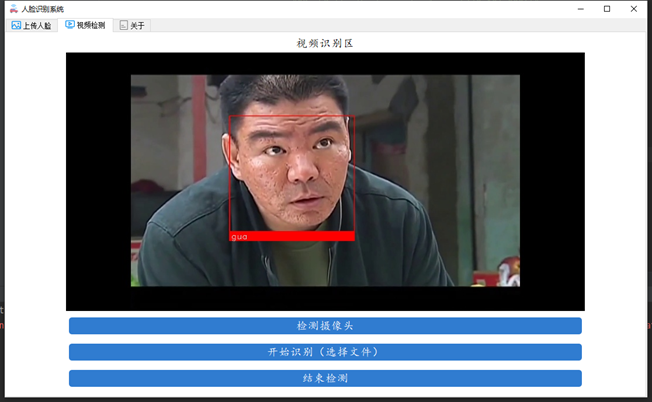
注:直接安装dlib库可能会有编译错误,可以通过下列方式获取编译好的识别dlib库
获取方式1:
直接从付费资源下载人脸识别系统+windows64位-dlib-19.17.0-cp37-cp37m-win_amd64.zip-深度学习文档类资源-CSDN文库
获取方式2:
在B站视频三连并在评论区留下你的邮箱地址用300行代码实现人脸识别系统_哔哩哔哩_bilibili
获取方式3:
在CSDN博客中三连并在评论区留下你的邮箱地址
用300行Python代码实现一个人脸识别系统_dejahu的博客-CSDN博客
基本原理
人脸识别和目标检测这些还不太一样,比如大家传统的训练一个目标检测模型,你只有对这个目标训练了之后,你的模型才能找到这样的目标,比如你的目标检测模型如果是检测植物的,那显然就不能检测动物。但是人脸识别就不一样,以你的手机为例,你发现你只录入了一次你的人脸信息,不需要训练,他就能准确的识别你,这里识别的原理是通过人脸识别的模型提取你脸部的特征向量,然后将实时检测到的你的人脸同数据库中保存的人脸进行比对,如果相似度超过一定的阈值之后,就认为比对成功。不过我这里说的只是简化版本的人脸识别,现在手机和门禁这些要复杂和安全的多,也不是简单平面上的人脸识别。
总结下来可以分为下面的步骤:
- 上传人脸到数据库
- 人脸检测
- 数据库比对并返回结果
这里我做了一个简答的示意图,可以帮助大家简单理解一下。
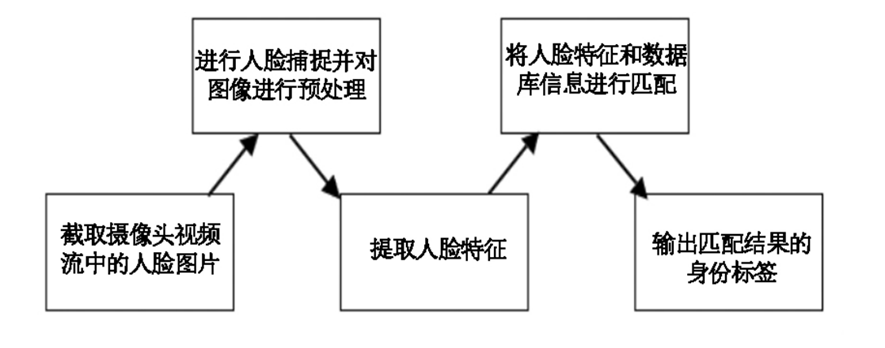
代码实现
废话不多说,这里就是我们的代码实现,代码我已经上传到码云,大家直接下载就行,地址就在博客开头。
不会安装python环境的兄弟请看这里:如何在pycharm中配置anaconda的虚拟环境_dejahu的博客-CSDN博客_如何在pycharm中配置anaconda
创建虚拟环境
创建虚拟环境前请大家先下载博客开头的码云源码到本地。
本次我们需要使用到python3.7的虚拟环境,命令如下:
conda create -n face python==3.7.3conda activate face安装必要的库
pip install -r requirements.txt愉快地开始你的人脸识别吧!
执行下面的主文件即可
python UI.py或者在pycharm中按照下面的方式直接运行即可
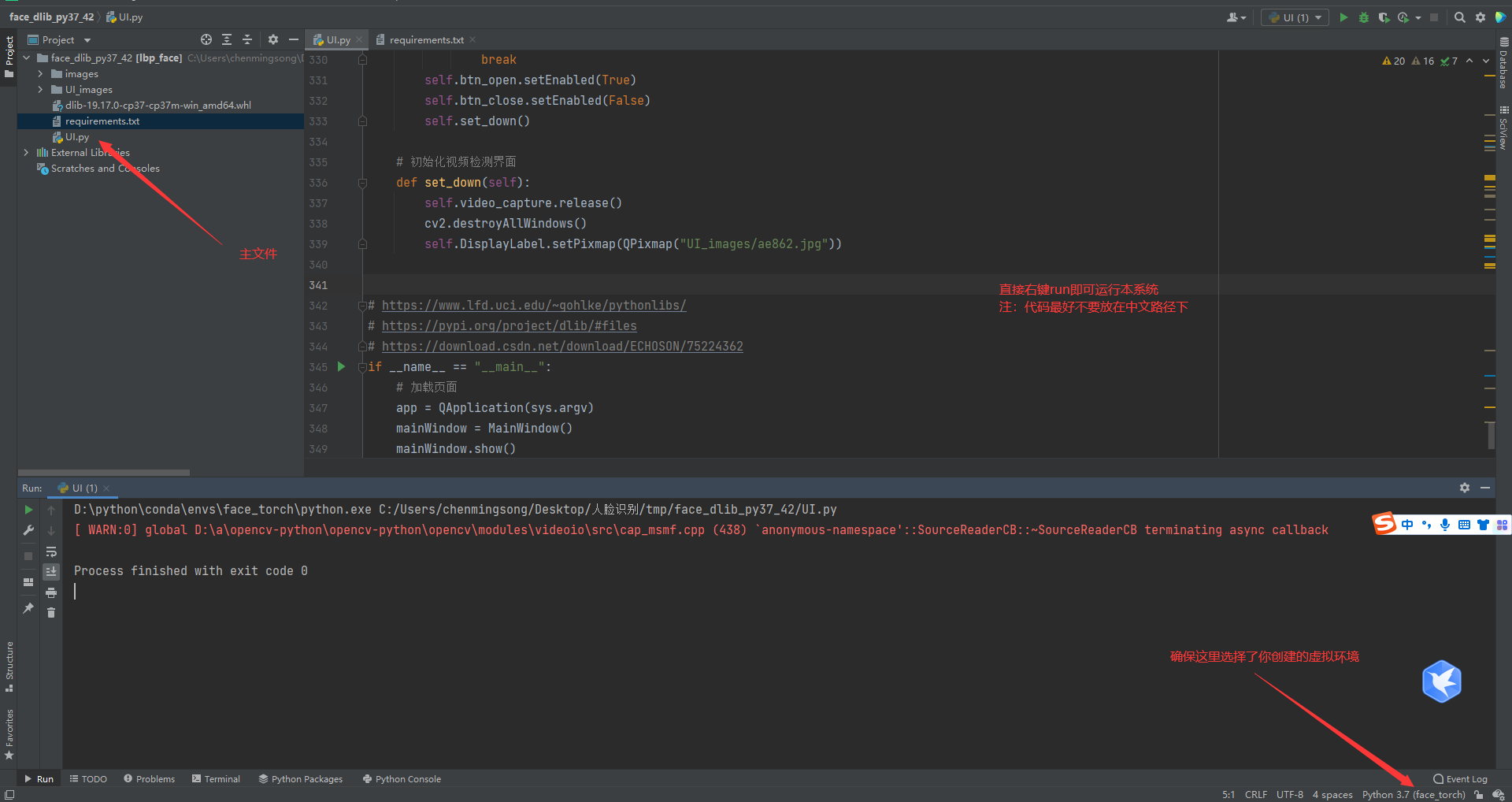
首先将你需要识别的人脸上传到数据库中
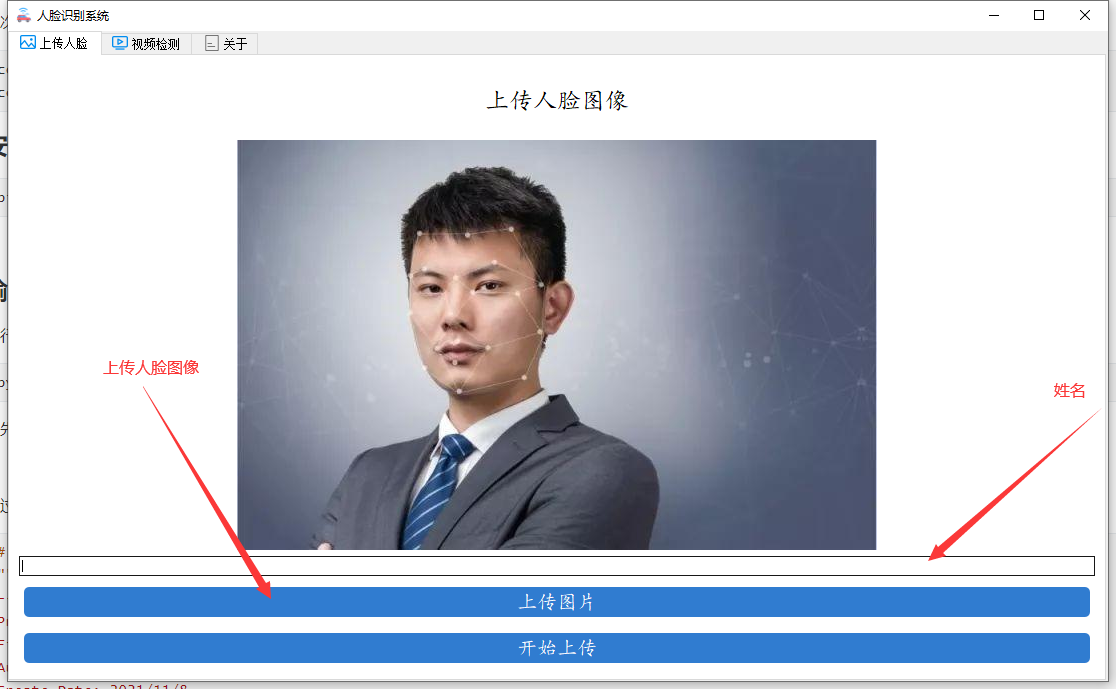
通过第二个视频检测功能识别实时的人脸
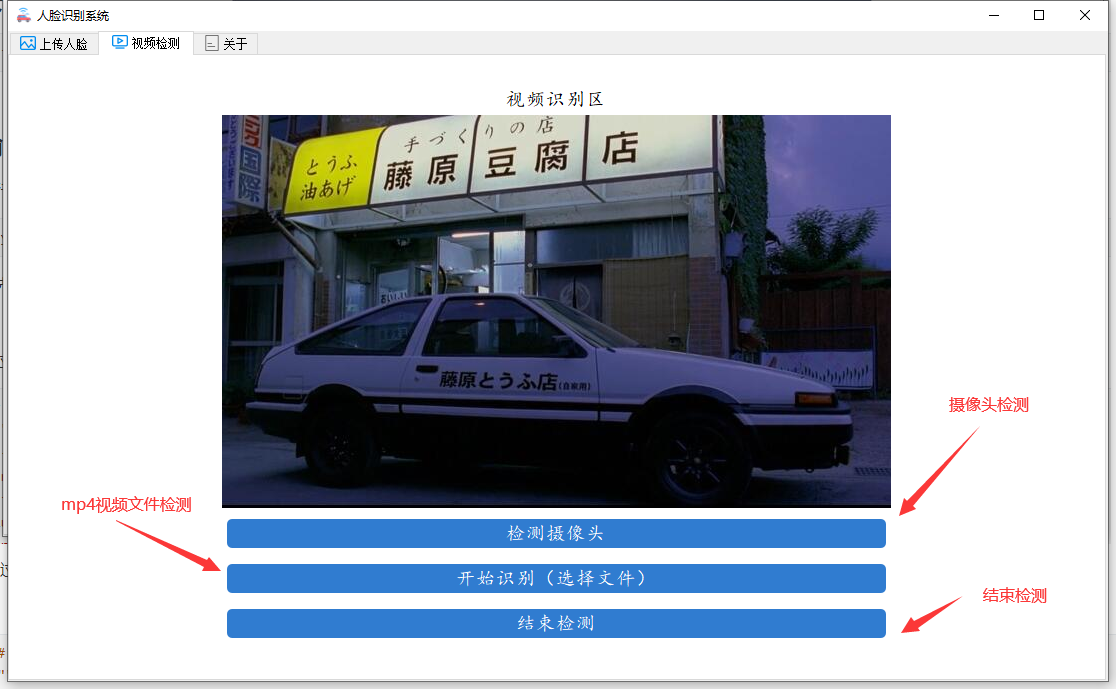
详细的代码如下:
# -*- coding: utf-8 -*-"""-------------------------------------------------Project Name: yolov5-jungongFile Name: window.py.pyAuthor: chenmingCreate Date: 2021/11/8Description:图形化界面,可以检测摄像头、视频和图片文件-------------------------------------------------"""# 应该在界面启动的时候就将模型加载出来,设置tmp的目录来放中间的处理结果import shutilimport PyQt5.QtCorefrom PyQt5.QtGui import *from PyQt5.QtCore import *from PyQt5.QtWidgets import *import threadingimport argparseimport osimport sysfrom pathlib import Pathimport cv2import torchimport torch.backends.cudnn as cudnnimport os.path as ospFILE = Path(__file__).resolve()ROOT = FILE.parents[0] # YOLOv5 root directoryif str(ROOT) not in sys.path: sys.path.append(str(ROOT)) # add ROOT to PATHROOT = Path(os.path.relpath(ROOT, Path.cwd())) # relativefrom models.common import DetectMultiBackendfrom utils.datasets import IMG_FORMATS, VID_FORMATS, LoadImages, LoadStreamsfrom utils.general import (LOGGER, check_file, check_img_size, check_imshow, check_requirements, colorstr, increment_path, non_max_suppression, print_args, scale_coords, strip_optimizer, xyxy2xywh)from utils.plots import Annotator, colors, save_one_boxfrom utils.torch_utils import select_device, time_sync# 添加一个关于界面# 窗口主类class MainWindow(QTabWidget): # 基本配置不动,然后只动第三个界面 def __init__(self): # 初始化界面 super().__init__() self.setWindowTitle('Target detection system') self.resize(1200, 800) self.setWindowIcon(QIcon("images/UI/lufei.png")) # 图片读取进程 self.output_size = 480 self.img2predict = "" self.device = 'cpu' # # 初始化视频读取线程 self.vid_source = '0' # 初始设置为摄像头 self.stopEvent = threading.Event() self.webcam = True self.stopEvent.clear() self.model = self.model_load(weights="runs/train/exp_yolov5s/weights/best.pt", device="cpu") # todo 指明模型加载的位置的设备 self.initUI() self.reset_vid() ''' ***模型初始化*** ''' @torch.no_grad() def model_load(self, weights="", # model.pt path(s) device='', # cuda device, i.e. 0 or 0,1,2,3 or cpu half=False, # use FP16 half-precision inference dnn=False, # use OpenCV DNN for ONNX inference ): device = select_device(device) half &= device.type != 'cpu' # half precision only supported on CUDA device = select_device(device) model = DetectMultiBackend(weights, device=device, dnn=dnn) stride, names, pt, jit, onnx = model.stride, model.names, model.pt, model.jit, model.onnx # Half half &= pt and device.type != 'cpu' # half precision only supported by PyTorch on CUDA if pt: model.model.half() if half else model.model.float() print("模型加载完成!") return model ''' ***界面初始化*** ''' def initUI(self): # 图片检测子界面 font_title = QFont('楷体', 16) font_main = QFont('楷体', 14) # 图片识别界面, 两个按钮,上传图片和显示结果 img_detection_widget = QWidget() img_detection_layout = QVBoxLayout() img_detection_title = QLabel("图片识别功能") img_detection_title.setFont(font_title) mid_img_widget = QWidget() mid_img_layout = QHBoxLayout() self.left_img = QLabel() self.right_img = QLabel() self.left_img.setPixmap(QPixmap("images/UI/up.jpeg")) self.right_img.setPixmap(QPixmap("images/UI/right.jpeg")) self.left_img.setAlignment(Qt.AlignCenter) self.right_img.setAlignment(Qt.AlignCenter) mid_img_layout.addWidget(self.left_img) mid_img_layout.addStretch(0) mid_img_layout.addWidget(self.right_img) mid_img_widget.setLayout(mid_img_layout) up_img_button = QPushButton("上传图片") det_img_button = QPushButton("开始检测") up_img_button.clicked.connect(self.upload_img) det_img_button.clicked.connect(self.detect_img) up_img_button.setFont(font_main) det_img_button.setFont(font_main) up_img_button.setStyleSheet("QPushButton{ color:white}" "QPushButton:hover{ background-color: rgb(2,110,180);}" "QPushButton{ background-color:rgb(48,124,208)}" "QPushButton{ border:2px}" "QPushButton{ border-radius:5px}" "QPushButton{ padding:5px 5px}" "QPushButton{ margin:5px 5px}") det_img_button.setStyleSheet("QPushButton{ color:white}" "QPushButton:hover{ background-color: rgb(2,110,180);}" "QPushButton{ background-color:rgb(48,124,208)}" "QPushButton{ border:2px}" "QPushButton{ border-radius:5px}" "QPushButton{ padding:5px 5px}" "QPushButton{ margin:5px 5px}") img_detection_layout.addWidget(img_detection_title, alignment=Qt.AlignCenter) img_detection_layout.addWidget(mid_img_widget, alignment=Qt.AlignCenter) img_detection_layout.addWidget(up_img_button) img_detection_layout.addWidget(det_img_button) img_detection_widget.setLayout(img_detection_layout) # todo 视频识别界面 # 视频识别界面的逻辑比较简单,基本就从上到下的逻辑 vid_detection_widget = QWidget() vid_detection_layout = QVBoxLayout() vid_title = QLabel("视频检测功能") vid_title.setFont(font_title) self.vid_img = QLabel() self.vid_img.setPixmap(QPixmap("images/UI/up.jpeg")) vid_title.setAlignment(Qt.AlignCenter) self.vid_img.setAlignment(Qt.AlignCenter) self.webcam_detection_btn = QPushButton("摄像头实时监测") self.mp4_detection_btn = QPushButton("视频文件检测") self.vid_stop_btn = QPushButton("停止检测") self.webcam_detection_btn.setFont(font_main) self.mp4_detection_btn.setFont(font_main) self.vid_stop_btn.setFont(font_main) self.webcam_detection_btn.setStyleSheet("QPushButton{ color:white}" "QPushButton:hover{ background-color: rgb(2,110,180);}" "QPushButton{ background-color:rgb(48,124,208)}" "QPushButton{ border:2px}" "QPushButton{ border-radius:5px}" "QPushButton{ padding:5px 5px}" "QPushButton{ margin:5px 5px}") self.mp4_detection_btn.setStyleSheet("QPushButton{ color:white}" "QPushButton:hover{ background-color: rgb(2,110,180);}" "QPushButton{ background-color:rgb(48,124,208)}" "QPushButton{ border:2px}" "QPushButton{ border-radius:5px}" "QPushButton{ padding:5px 5px}" "QPushButton{ margin:5px 5px}") self.vid_stop_btn.setStyleSheet("QPushButton{ color:white}" "QPushButton:hover{ background-color: rgb(2,110,180);}" "QPushButton{ background-color:rgb(48,124,208)}" "QPushButton{ border:2px}" "QPushButton{ border-radius:5px}" "QPushButton{ padding:5px 5px}" "QPushButton{ margin:5px 5px}") self.webcam_detection_btn.clicked.connect(self.open_cam) self.mp4_detection_btn.clicked.connect(self.open_mp4) self.vid_stop_btn.clicked.connect(self.close_vid) # 添加组件到布局上 vid_detection_layout.addWidget(vid_title) vid_detection_layout.addWidget(self.vid_img) vid_detection_layout.addWidget(self.webcam_detection_btn) vid_detection_layout.addWidget(self.mp4_detection_btn) vid_detection_layout.addWidget(self.vid_stop_btn) vid_detection_widget.setLayout(vid_detection_layout) # todo 关于界面 about_widget = QWidget() about_layout = QVBoxLayout() about_title = QLabel('欢迎使用目标检测系统\n\n 提供付费指导:有需要的好兄弟加下面的QQ即可') # todo 修改欢迎词语 about_title.setFont(QFont('楷体', 18)) about_title.setAlignment(Qt.AlignCenter) about_img = QLabel() about_img.setPixmap(QPixmap('images/UI/qq.png')) about_img.setAlignment(Qt.AlignCenter) # label4.setText("如何调整学习率") label_super = QLabel() # todo 更换作者信息 label_super.setText("或者你可以在这里找到我-->肆十二") label_super.setFont(QFont('楷体', 16)) label_super.setOpenExternalLinks(True) # label_super.setOpenExternalLinks(True) label_super.setAlignment(Qt.AlignRight) about_layout.addWidget(about_title) about_layout.addStretch() about_layout.addWidget(about_img) about_layout.addStretch() about_layout.addWidget(label_super) about_widget.setLayout(about_layout) self.left_img.setAlignment(Qt.AlignCenter) self.addTab(img_detection_widget, '图片检测') self.addTab(vid_detection_widget, '视频检测') self.addTab(about_widget, '联系我') self.setTabIcon(0, QIcon('images/UI/lufei.png')) self.setTabIcon(1, QIcon('images/UI/lufei.png')) self.setTabIcon(2, QIcon('images/UI/lufei.png')) ''' ***上传图片*** ''' def upload_img(self): # 选择录像文件进行读取 fileName, fileType = QFileDialog.getOpenFileName(self, 'Choose file', '', '*.jpg *.png *.tif *.jpeg') if fileName: suffix = fileName.split(".")[-1] save_path = osp.join("images/tmp", "tmp_upload." + suffix) shutil.copy(fileName, save_path) # 应该调整一下图片的大小,然后统一防在一起 im0 = cv2.imread(save_path) resize_scale = self.output_size / im0.shape[0] im0 = cv2.resize(im0, (0, 0), fx=resize_scale, fy=resize_scale) cv2.imwrite("images/tmp/upload_show_result.jpg", im0) # self.right_img.setPixmap(QPixmap("images/tmp/single_result.jpg")) self.img2predict = fileName self.left_img.setPixmap(QPixmap("images/tmp/upload_show_result.jpg")) # todo 上传图片之后右侧的图片重置, self.right_img.setPixmap(QPixmap("images/UI/right.jpeg")) ''' ***检测图片*** ''' def detect_img(self): model = self.model output_size = self.output_size source = self.img2predict # file/dir/URL/glob, 0 for webcam imgsz = 640 # inference size (pixels) conf_thres = 0.25 # confidence threshold iou_thres = 0.45 # NMS IOU threshold max_det = 1000 # maximum detections per image device = self.device # cuda device, i.e. 0 or 0,1,2,3 or cpu view_img = False # show results save_txt = False # save results to *.txt save_conf = False # save confidences in --save-txt labels save_crop = False # save cropped prediction boxes nosave = False # do not save images/videos classes = None # filter by class: --class 0, or --class 0 2 3 agnostic_nms = False # class-agnostic NMS augment = False # ugmented inference visualize = False # visualize features line_thickness = 3 # bounding box thickness (pixels) hide_labels = False # hide labels hide_conf = False # hide confidences half = False # use FP16 half-precision inference dnn = False # use OpenCV DNN for ONNX inference print(source) if source == "": QMessageBox.warning(self, "请上传", "请先上传图片再进行检测") else: source = str(source) device = select_device(self.device) webcam = False stride, names, pt, jit, onnx = model.stride, model.names, model.pt, model.jit, model.onnx imgsz = check_img_size(imgsz, s=stride) # check image size save_img = not nosave and not source.endswith('.txt') # save inference images # Dataloader if webcam: view_img = check_imshow() cudnn.benchmark = True # set True to speed up constant image size inference dataset = LoadStreams(source, img_size=imgsz, stride=stride, auto=pt and not jit) bs = len(dataset) # batch_size else: dataset = LoadImages(source, img_size=imgsz, stride=stride, auto=pt and not jit) bs = 1 # batch_size vid_path, vid_writer = [None] * bs, [None] * bs # Run inference if pt and device.type != 'cpu': model(torch.zeros(1, 3, *imgsz).to(device).type_as(next(model.model.parameters()))) # warmup dt, seen = [0.0, 0.0, 0.0], 0 for path, im, im0s, vid_cap, s in dataset: t1 = time_sync() im = torch.from_numpy(im).to(device) im = im.half() if half else im.float() # uint8 to fp16/32 im /= 255 # 0 - 255 to 0.0 - 1.0 if len(im.shape) == 3: im = im[None] # expand for batch dim t2 = time_sync() dt[0] += t2 - t1 # Inference # visualize = increment_path(save_dir / Path(path).stem, mkdir=True) if visualize else False pred = model(im, augment=augment, visualize=visualize) t3 = time_sync() dt[1] += t3 - t2 # NMS pred = non_max_suppression(pred, conf_thres, iou_thres, classes, agnostic_nms, max_det=max_det) dt[2] += time_sync() - t3 # Second-stage classifier (optional) # pred = utils.general.apply_classifier(pred, classifier_model, im, im0s) # Process predictions for i, det in enumerate(pred): # per image seen += 1 if webcam: # batch_size >= 1 p, im0, frame = path[i], im0s[i].copy(), dataset.count s += f'{ i}: ' else: p, im0, frame = path, im0s.copy(), getattr(dataset, 'frame', 0) p = Path(p) # to Path s += '%gx%g ' % im.shape[2:] # print string gn = torch.tensor(im0.shape)[[1, 0, 1, 0]] # normalization gain whwh imc = im0.copy() if save_crop else im0 # for save_crop annotator = Annotator(im0, line_width=line_thickness, example=str(names)) if len(det): # Rescale boxes from img_size to im0 size det[:, :4] = scale_coords(im.shape[2:], det[:, :4], im0.shape).round() # Print results for c in det[:, -1].unique(): n = (det[:, -1] == c).sum() # detections per class s += f"{ 's' * (n >1)}, " # add to string # Write results for *xyxy, conf, cls in reversed(det): if save_txt: # Write to file xywh = (xyxy2xywh(torch.tensor(xyxy).view(1, 4)) / gn).view( -1).tolist() # normalized xywh line = (cls, *xywh, conf) if save_conf else (cls, *xywh) # label format # with open(txt_path + '.txt', 'a') as f: # f.write(('%g ' * len(line)).rstrip() % line + '\n') if save_img or save_crop or view_img: # Add bbox to image c = int(cls) # integer class label = None if hide_labels else (names[c] if hide_conf else f'{ conf:.2f}') annotator.box_label(xyxy, label, color=colors(c, True)) # if save_crop: # save_one_box(xyxy, imc, file=save_dir / 'crops' / names[c] / f'{ p.stem}.jpg', # BGR=True) # Print time (inference-only) LOGGER.info(f'{ t3 - t2:.3f}s)') # Stream results im0 = annotator.result() # if view_img: # cv2.imshow(str(p), im0) # cv2.waitKey(1) # 1 millisecond # Save results (image with detections) resize_scale = output_size / im0.shape[0] im0 = cv2.resize(im0, (0, 0), fx=resize_scale, fy=resize_scale) cv2.imwrite("images/tmp/single_result.jpg", im0) # 目前的情况来看,应该只是ubuntu下会出问题,但是在windows下是完整的,所以继续 self.right_img.setPixmap(QPixmap("images/tmp/single_result.jpg")) # 视频检测,逻辑基本一致,有两个功能,分别是检测摄像头的功能和检测视频文件的功能,先做检测摄像头的功能。 ''' ### 界面关闭事件 ### ''' def closeEvent(self, event): reply = QMessageBox.question(self, 'quit', "Are you sure?", QMessageBox.Yes | QMessageBox.No, QMessageBox.No) if reply == QMessageBox.Yes: self.close() event.accept() else: event.ignore() ''' ### 视频关闭事件 ### ''' def open_cam(self): self.webcam_detection_btn.setEnabled(False) self.mp4_detection_btn.setEnabled(False) self.vid_stop_btn.setEnabled(True) self.vid_source = '0' self.webcam = True th = threading.Thread(target=self.detect_vid) th.start() ''' ### 开启视频文件检测事件 ### ''' def open_mp4(self): fileName, fileType = QFileDialog.getOpenFileName(self, 'Choose file', '', '*.mp4 *.avi') if fileName: self.webcam_detection_btn.setEnabled(False) self.mp4_detection_btn.setEnabled(False) # self.vid_stop_btn.setEnabled(True) self.vid_source = fileName self.webcam = False th = threading.Thread(target=self.detect_vid) th.start() ''' ### 视频开启事件 ### ''' # 视频和摄像头的主函数是一样的,不过是传入的source不同罢了 def detect_vid(self): # pass model = self.model output_size = self.output_size # source = self.img2predict # file/dir/URL/glob, 0 for webcam imgsz = 640 # inference size (pixels) conf_thres = 0.25 # confidence threshold iou_thres = 0.45 # NMS IOU threshold max_det = 1000 # maximum detections per image # device = self.device # cuda device, i.e. 0 or 0,1,2,3 or cpu view_img = False # show results save_txt = False # save results to *.txt save_conf = False # save confidences in --save-txt labels save_crop = False # save cropped prediction boxes nosave = False # do not save images/videos classes = None # filter by class: --class 0, or --class 0 2 3 agnostic_nms = False # class-agnostic NMS augment = False # ugmented inference visualize = False # visualize features line_thickness = 3 # bounding box thickness (pixels) hide_labels = False # hide labels hide_conf = False # hide confidences half = False # use FP16 half-precision inference dnn = False # use OpenCV DNN for ONNX inference source = str(self.vid_source) webcam = self.webcam device = select_device(self.device) stride, names, pt, jit, onnx = model.stride, model.names, model.pt, model.jit, model.onnx imgsz = check_img_size(imgsz, s=stride) # check image size save_img = not nosave and not source.endswith('.txt') # save inference images # Dataloader if webcam: view_img = check_imshow() cudnn.benchmark = True # set True to speed up constant image size inference dataset = LoadStreams(source, img_size=imgsz, stride=stride, auto=pt and not jit) bs = len(dataset) # batch_size else: dataset = LoadImages(source, img_size=imgsz, stride=stride, auto=pt and not jit) bs = 1 # batch_size vid_path, vid_writer = [None] * bs, [None] * bs # Run inference if pt and device.type != 'cpu': model(torch.zeros(1, 3, *imgsz).to(device).type_as(next(model.model.parameters()))) # warmup dt, seen = [0.0, 0.0, 0.0], 0 for path, im, im0s, vid_cap, s in dataset: t1 = time_sync() im = torch.from_numpy(im).to(device) im = im.half() if half else im.float() # uint8 to fp16/32 im /= 255 # 0 - 255 to 0.0 - 1.0 if len(im.shape) == 3: im = im[None] # expand for batch dim t2 = time_sync() dt[0] += t2 - t1 # Inference # visualize = increment_path(save_dir / Path(path).stem, mkdir=True) if visualize else False pred = model(im, augment=augment, visualize=visualize) t3 = time_sync() dt[1] += t3 - t2 # NMS pred = non_max_suppression(pred, conf_thres, iou_thres, classes, agnostic_nms, max_det=max_det) dt[2] += time_sync() - t3 # Second-stage classifier (optional) # pred = utils.general.apply_classifier(pred, classifier_model, im, im0s) # Process predictions for i, det in enumerate(pred): # per image seen += 1 if webcam: # batch_size >= 1 p, im0, frame = path[i], im0s[i].copy(), dataset.count s += f'{ i}: ' else: p, im0, frame = path, im0s.copy(), getattr(dataset, 'frame', 0) p = Path(p) # to Path # save_path = str(save_dir / p.name) # im.jpg # txt_path = str(save_dir / 'labels' / p.stem) + ( # '' if dataset.mode == 'image' else f'_{ frame}') # im.txt s += '%gx%g ' % im.shape[2:] # print string gn = torch.tensor(im0.shape)[[1, 0, 1, 0]] # normalization gain whwh imc = im0.copy() if save_crop else im0 # for save_crop annotator = Annotator(im0, line_width=line_thickness, example=str(names)) if len(det): # Rescale boxes from img_size to im0 size det[:, :4] = scale_coords(im.shape[2:], det[:, :4], im0.shape).round() # Print results for c in det[:, -1].unique(): n = (det[:, -1] == c).sum() # detections per class s += f"{ 's' * (n >1)}, " # add to string # Write results for *xyxy, conf, cls in reversed(det): if save_txt: # Write to file xywh = (xyxy2xywh(torch.tensor(xyxy).view(1, 4)) / gn).view( -1).tolist() # normalized xywh line = (cls, *xywh, conf) if save_conf else (cls, *xywh) # label format # with open(txt_path + '.txt', 'a') as f: # f.write(('%g ' * len(line)).rstrip() % line + '\n') if save_img or save_crop or view_img: # Add bbox to image c = int(cls) # integer class label = None if hide_labels else (names[c] if hide_conf else f'{ conf:.2f}') annotator.box_label(xyxy, label, color=colors(c, True)) # if save_crop: # save_one_box(xyxy, imc, file=save_dir / 'crops' / names[c] / f'{ p.stem}.jpg', # BGR=True) # Print time (inference-only) LOGGER.info(f'{ t3 - t2:.3f}s)') # Stream results # Save results (image with detections) im0 = annotator.result() frame = im0 resize_scale = output_size / frame.shape[0] frame_resized = cv2.resize(frame, (0, 0), fx=resize_scale, fy=resize_scale) cv2.imwrite("images/tmp/single_result_vid.jpg", frame_resized) self.vid_img.setPixmap(QPixmap("images/tmp/single_result_vid.jpg")) # self.vid_img # if view_img: # cv2.imshow(str(p), im0) # self.vid_img.setPixmap(QPixmap("images/tmp/single_result_vid.jpg")) # cv2.waitKey(1) # 1 millisecond if cv2.waitKey(25) & self.stopEvent.is_set() == True: self.stopEvent.clear() self.webcam_detection_btn.setEnabled(True) self.mp4_detection_btn.setEnabled(True) self.reset_vid() break # self.reset_vid() ''' ### 界面重置事件 ### ''' def reset_vid(self): self.webcam_detection_btn.setEnabled(True) self.mp4_detection_btn.setEnabled(True) self.vid_img.setPixmap(QPixmap("images/UI/up.jpeg")) self.vid_source = '0' self.webcam = True ''' ### 视频重置事件 ### ''' def close_vid(self): self.stopEvent.set() self.reset_vid()if __name__ == "__main__": app = QApplication(sys.argv) mainWindow = MainWindow() mainWindow.show() sys.exit(app.exec_())找到我
你可以通过这些方式来寻找我。
B站:肆十二-
CSDN:肆十二
知乎:肆十二
微博:肆十二-
现在关注以后就是老朋友喽!
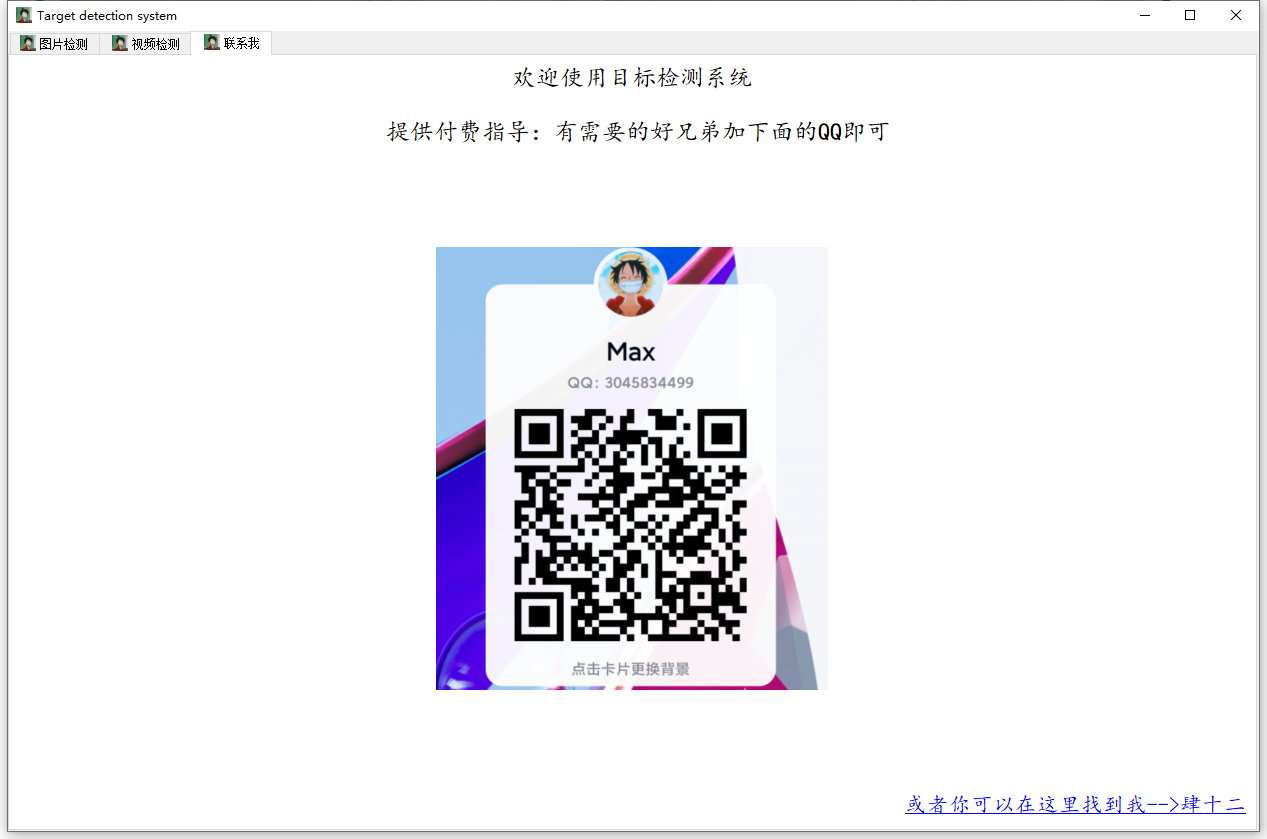






![长生劫新手地图物资点_长生劫地图走法攻略[多图]](/autopic/6MJ-55Fs5Lde5cnj5bzY5Mlj5Mh_54zc6YJR54X5KmR.jpg)













